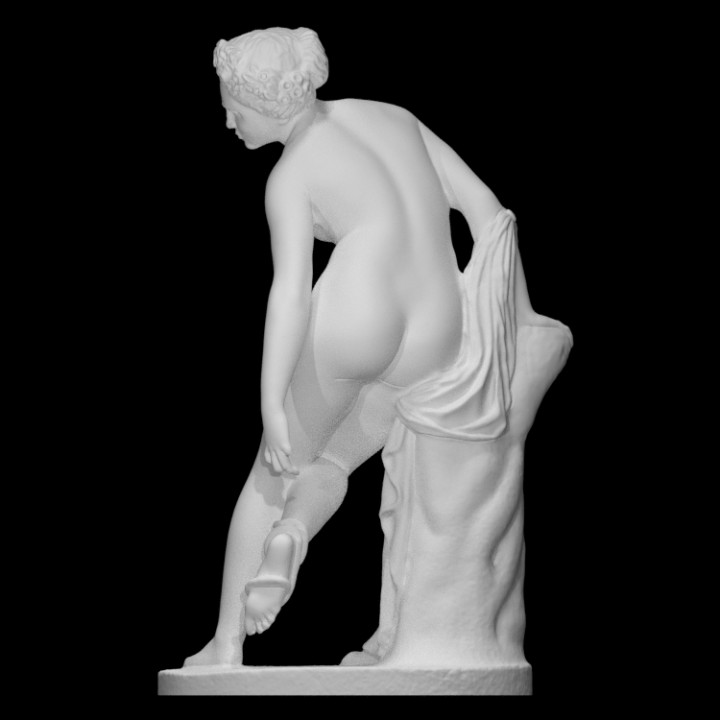
Eurydice Dying at The Louvre, Paris
myminifactory
This marble sculpture completed in 1822 captures the heart-wrenching moment when Eurydice meets her demise after being bitten by a venomous snake. The masterpiece was crafted by Charles-Francois LeBoeuf, an artist of great skill and precision. In Greek mythology, Eurydice was a beautiful oak nymph or one of the daughters of Apollo, who wielded incredible power as the god of music and the sun chariot. She was married to Orpheus, a musician with a voice that could charm even the gods, and together they shared a deep and abiding love. Orpheus' joyous melodies filled the air on their wedding day, as Eurydice danced through the meadow with reckless abandon. But fate had other plans, as Aristaeus spotted her and chased after her, causing her to step on a deadly viper that ended her life instantly. Overwhelmed by grief, Orpheus poured his heart out in music, singing so mournfully that even the gods themselves wept at his despair. The nymphs and deities begged him to travel to the Underworld to retrieve Eurydice's soul, which he gladly did. With his enchanting melodies softening the hearts of Hades and Persephone, Orpheus was granted permission to take Eurydice back to the world of the living. But there was a condition: he had to walk in front of her and not look back until they reached the upper world. Alas, as soon as he began to doubt that she was truly behind him, Eurydice vanished into thin air. Later, when Orpheus met his own demise at the hands of the Maenads, his soul found its way to the Underworld, where it was reunited with Eurydice's eternal spirit. This poignant tale has been passed down through the ages, a testament to the power of love and the enduring legacy of Greek mythology. The story as we know it today is attributed to Virgil, who first introduced the name of Aristaeus and the tragic outcome. However, other ancient writers have offered their own interpretations, with Phaedrus depicting Orpheus as a cowardly figure who mocked the gods by trying to retrieve Eurydice from the Underworld. Ovid takes a different approach, suggesting that Eurydice's death was not caused by fleeing from Aristaeus, but rather by dancing with naiads on her wedding day. Plato, meanwhile, portrays Orpheus as a man who failed to demonstrate true love, opting instead to try and retrieve his wife alive. This object is part of the "Scan The World" initiative, a non-profit project launched by MyMiniFactory that aims to create a digital archive of fully 3D printable sculptures, artworks, and landmarks from around the globe. If you have an interesting item in your possession and would like to contribute, simply email stw@myminifactory.com to learn more about how you can help.
With this file you will be able to print Eurydice Dying at The Louvre, Paris with your 3D printer. Click on the button and save the file on your computer to work, edit or customize your design. You can also find more 3D designs for printers on Eurydice Dying at The Louvre, Paris.
